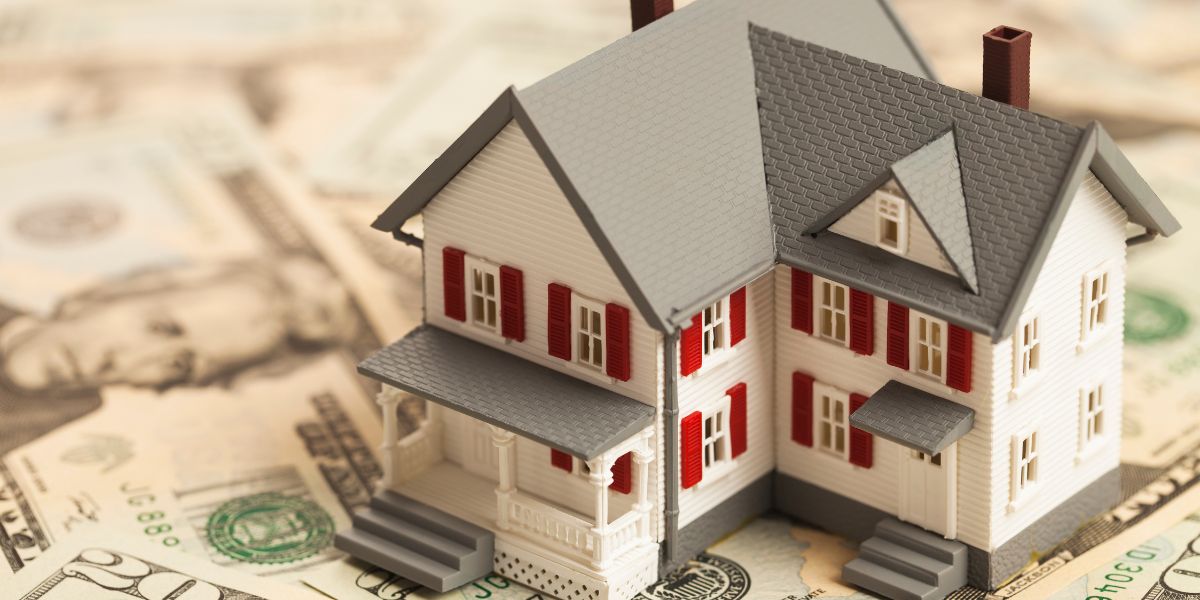

If you own a home, you may be considering opening a home equity line of credit (HELOC) as a cost-effective alternative to other loan choices. And as many homes in Western Maryland and West Virginia’s Eastern Panhandle have recently increased in value—in Martinsburg residents have seen an in the last year alone!—the equity in your home may be more than you think.
However, home equity loans can be slightly more complex than other home and personal loans, which can be intimidating for homeowners—especially first-time homeowners. In this post we’ll explain exactly how HELOCs work and the many benefits of using HELOCs over other loans. Keep reading to see if a HELOC might be right for you!
What is a Home Equity Line of Credit?
A Home Equity Line of Credit (HELOC) is a lending product that allows homeowners to borrow money against the equity they have in their home—the value of their home, minus any outstanding mortgages or liens. Much like a credit card, homeowners are approved for a certain credit limit based on their equity, and they can borrow money up to that limit, as they need it.
HELOCs vs. Traditional Home Equity Loans
Home equity loans and HELOCs both allow you to borrow against the equity in your home, but the way you access your funds and how you pay them back are quite different. Here are some important differences between these two types of loans:
Credit Line vs. Lump Sum:
A HELOC is a line of credit—you borrow a little bit at the time to pay for things as you need it, and you don’t have to spend your entire limit. A home equity loan is a lump sum loan, where you borrow a fixed amount of money all at once.
Draw Period vs. Fixed Term:
With a HELOC, you’ll start with a ‘draw phase’ (usually between 5-10 years), during which you can borrow money as needed and are only required to pay off the interest. Afterward, there will be a ‘repayment’ phase where you also pay off the principal—more on this below. A home equity loan comes with a fixed term (usually between 5-15 years), during which the borrower will have to pay off both the principal and the interest in fixed, monthly payments.
Interest Rate:
The interest rate on a HELOC is typically variable, meaning it can change over time based on the market conditions. The interest rate on a home equity loan is typically fixed, meaning it stays the same throughout the life of the loan. The upshot of this is HELOC payment amounts can fluctuate, while home equity payments will usually stay the same.
Repayment:
As we mentioned above, during the draw period of a HELOC, borrowers are usually only required to make payments on interest, which can be fairly low. Once the draw period ends, the borrower will have to begin repaying the principal and interest, which may be higher than initial payments. On the other hand, in a home equity loan, the borrower is required to make payments on both the principal and interest from the start, and payment amounts stay the same over the life of the loan.
Applying for a HELOC
Before you apply, be sure it’s worth your time by calculating the equity in your home. You can do so by checking your mortgage balance and comparing it to the value of your home when you purchased it, though this number will likely be lower than your actual equity, since it won’t take into consideration if your home has gone up in value. However, be aware that your lender will usually require an appraisal to verify the value of your home, ultimately basing your HELOC limit on this figure.
When you are ready to apply, you’ll need documentation including:
- Documents to verify income: tax returns, pay stubs, information about investments
- Mortgage and Home Ownership Documents: Mortgage statements, title to your home, and proof of homeowner’s insurance
- Other liabilities: Information about your other loans and debts
- Identification: State-issued ID and Social Security Number
As with any loan, your bank will check your credit and verify your income and debts before approving your HELOC. Banks typically want to see a debt-to-income ratio of no higher than 43%—depending on your credit rating. While this may be typical, you will want to check with the lender to understand their preferred debt-to-income ratio.
Approval of a HELOC usually takes 3-6 weeks and may include an appraisal of your home—which you will need to pay for at closing. After you are approved, you’ll need to come into your bank to sign some closing documents and pay closing costs. HELOC closing costs are typically lower than those for home equity loans and mortgages.
HELOC Limits and Repayment Terms
If your application is approved, you’ll usually be granted a credit line of up to 80-90% of the equity in your home, which you will be able to access using a special HELOC check book, debit card, and/or withdrawals at your branch.
Your monthly payments could vary widely for a number of reasons:
- Your balance will range over time, as you typically don’t borrow your entire limit at once
- HELOCs have two distinct phases, one where you pay ONLY interest, and one where you pay interest AND principal
- HELOCs have a variable interest rate, which can go up or down over time
Even though your monthly payment may change over time, remember that your bank will not approve you for a loan amount that it believes you will not be able to pay. Regardless of the size of the payments, they should be affordable, as long as your income or financial picture doesn’t change drastically.
How to Use a HELOC to Get the Most Out of Your Home
While there are no restrictions on how you use your HELOC funds, certain applications are considered more beneficial than others. One of the most common and best uses of a HELOC is for home improvements. Even the IRS recognizes this, and may allow you to deduct interest on your HELOC “when you use the proceeds to buy, build or substantially improve your home that secures the loan.” *
*JSB does not provide tax, legal or accounting advice. This material has been prepared for informational purposes only, and is not intended to provide, and should not be relied on for, tax, legal or accounting advice. You should consult your own tax, legal and accounting advisors before engaging in any transaction.
Certain improvements can add more value to your home than others. Consider the following ways to use a HELOC for home improvements:
- Remodel a bathroom
- Remodel your kitchen
- Make exterior improvements: new siding, painting, woodwork repairs
- Replace your roof or windows
- Build an addition
Other Uses of a HELOC
While you may not get a tax deduction for other uses, there are some things you can do with your funds that still make smart financial sense. These might include:
Paying off high-interest debt:
Paying for education expenses:
Using it as an emergency fund:
Managing Your HELOC Responsibly
As with any lending product, it’s important to responsibly manage the use and repayment of your HELOC, to avoid unnecessary financial hardship or a negative impact on your credit score. Here are a few important measures to follow to ensure the most productive and effective use of your HELOC:
Make your payments regularly and on time.
HELOC payment amounts may change, but your due date will always be the same. Your HELOC is one more payment date to manage—create reminders to be sure you never miss one. Consider setting up automatic payments from your bank account.
Pay more than the minimum amount.
In the draw phase, you may only be required to pay off your interest. As with credit cards, pay more than the minimum required interest payment when you can. This will not only reduce your overall interest payments, like a credit card, it will free up those funds (your borrowing limit) to use later, if needed.
Don’t use your HELOC for the wrong things.
Ideally, use your HELOC for things that will have long-term, meaningful effects on your family’s financial future. Avoid using it for non-essential expenses like travel and vacation, electronics, weddings, or everyday expenses. Additionally, while you may get a better interest rate than a car loan, because cars depreciate in value, it doesn’t make sense to put your home on the line for them.
Interested in a HELOC?
When used responsibly, home equity lines of credit can be great, low-interest tools to help you achieve your financial goals, from improving your home to paying off high-interest debt. They can offer more flexible lending and repayment options than home equity or term loans, and lower interest rates than many other credit products.
If you are considering maximizing your home value with a HELOC, here at Jefferson Security Bank, we’re more than happy to assist. We can answer your questions, discuss how to budget for a HELOC, and help weigh your options and navigate the application process if you decide to apply. Reach out to us at one of our local branch locations in Shepherdstown, Martinsburg, Charles Town, Inwood, or Sharpsburg, MD today to get started!








